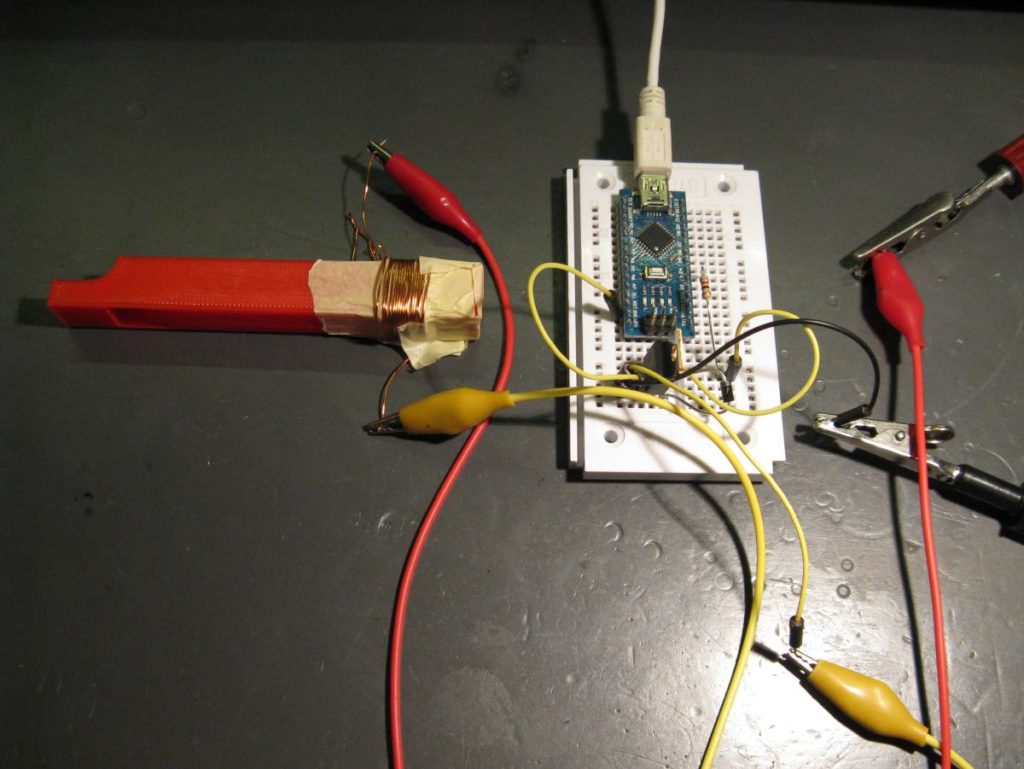Okay, what’s this about?
Oona Räisänen challenged her readers to construct a whistle that could transmit data using FSK.
And if one reads her challenge carefully it says “whistle”. Not “pea whistle“. Now THAT simplifies things a lot!
A whistle design like this can be modified by inserting a magnet and wrapping a coil around it to act as an electromagnet. That way the length of the channel can be varied by moving the magnet, and with it the wavelength of the sound.
Then, by controlling the electromagnet with the bitstream – to – be – transmitted, one can transmit data by whistling.
So, I built such a whistle (Dutch). With a simple arduino sketch and a mosfet it is indeed possible to transmit data by whistling.
It sounds like this. (that ticking/clicking noise when I’m not whistling is the magnet moving.)
I do not have the skill level that Oona has when it comes to decoding mystery signals, so I can’t decode the data out of that. I just hope the signal can still be decoded. But it is supposed to say “HELLO”, with leading 0xAA 0xA7. Bit time is 75ms, that is: for every “1” in the bitstream the electromagnet is powered for 75ms, and for every 0 it is left unpowered.
And because it is close to the new year, a bonus audio file for those among us that like to decode mystery signals: clicky. 🙂

Leave a Reply